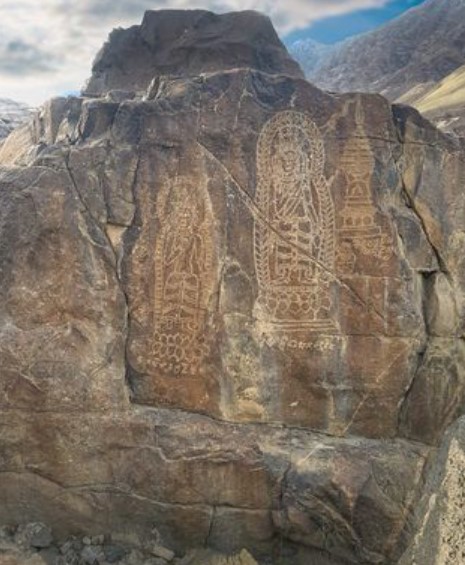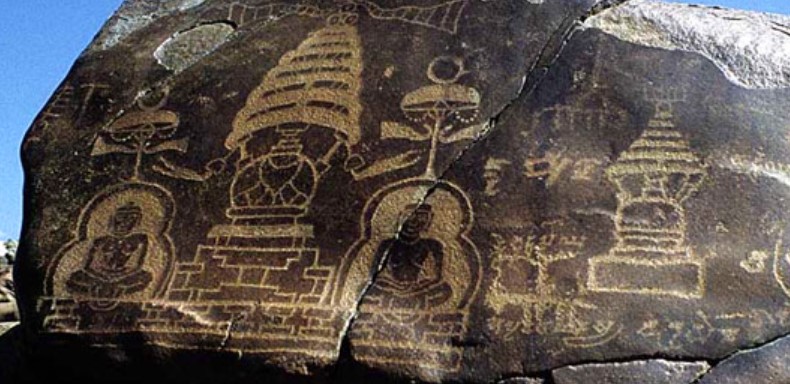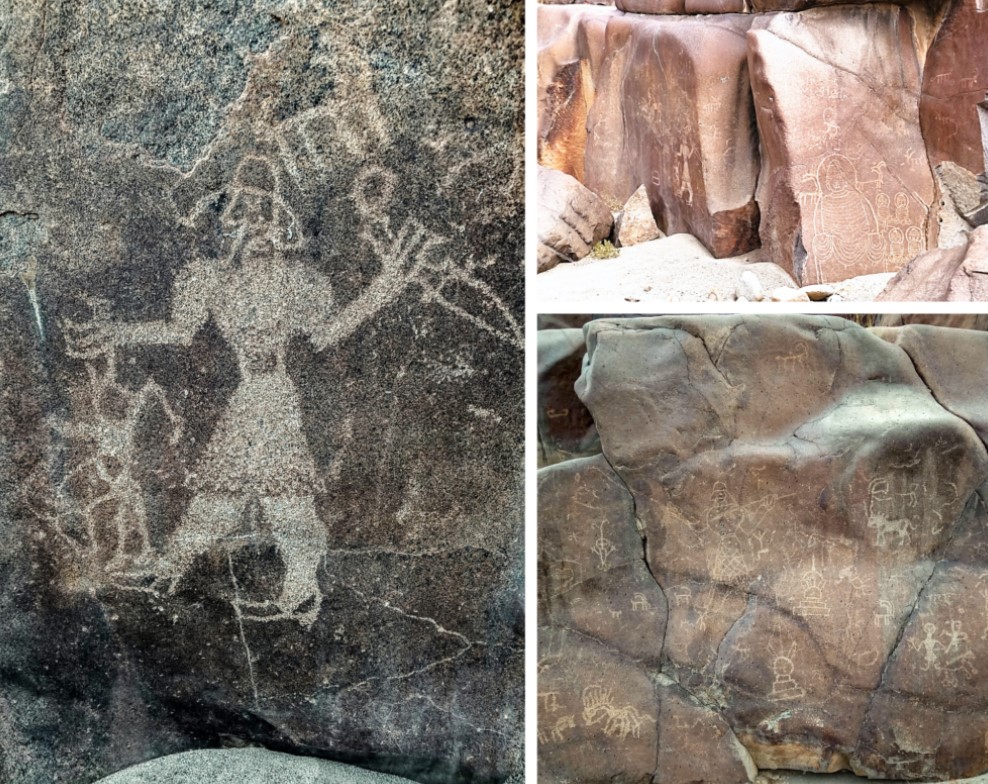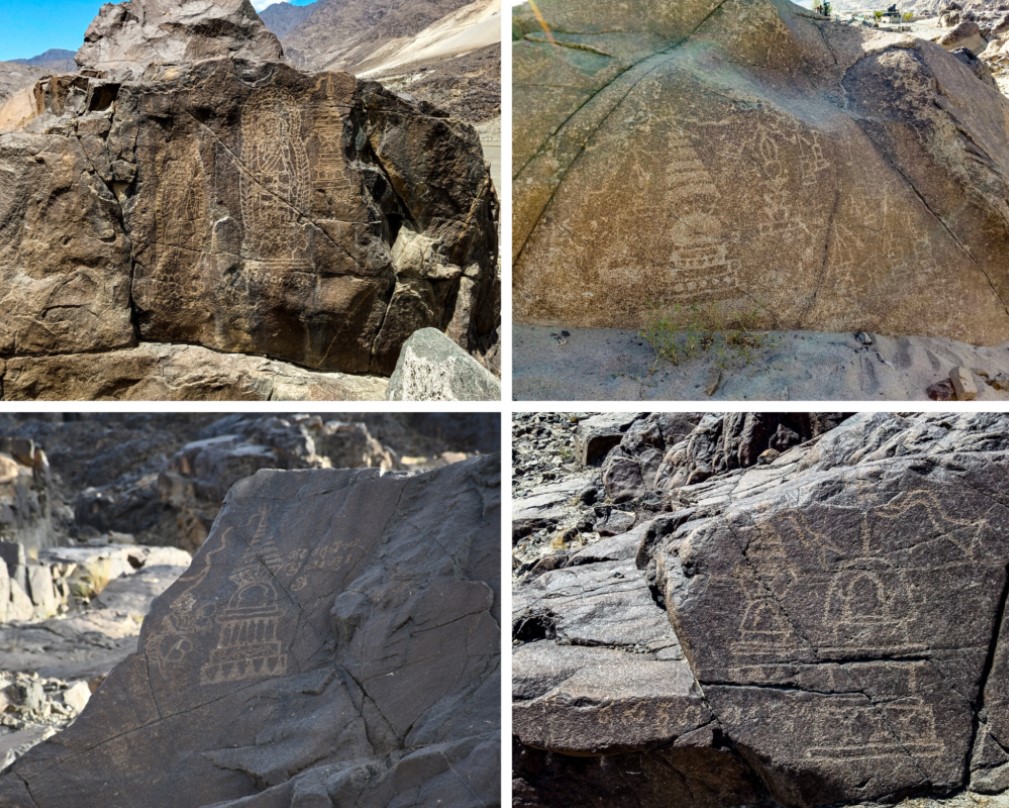Located along the scenic route to the tourist destinations of northern Pakistan is a hidden gem of historical significance – the Thalpan Hieroglyphs near the town of Chilas. These fascinating ancient rock carvings offer a fascinating insight into the past, capturing the essence of the period when the region was an important part of the Silk Road. From depictions of wild animals to sacred symbols, these hieroglyphs offer rare insight into the culture, religion and trade activities of ancient civilizations.
In this article archeology.dulichvn.net will take you on a journey of discovery of the Thalpan Petroglyphs , exploring their historical context, their significance and how they have stood the test of time as one of Pakistan’s most remarkable archaeological sites.
1. What Are the Thalpan Petroglyphs?
The Thalpan petroglyphs are ancient rock carvings found near Chilas, a town located in the northern region of Pakistan. The petroglyphs are etched into rock faces along the highway, offering a visual connection to the ancient peoples who once inhabited this area.

1.1. Depictions of Life and Nature
The petroglyphs feature various motifs, including scenes of ibexes, the majestic mountain goats native to the region, as well as representations of stupas, meditating Buddhas, and other religious symbols. These engravings offer a snapshot of the lives and beliefs of the people who once traveled along this historic route.
see more: The Mammoth Bone Huts of Mezhyrich: A Prehistoric Marvel
1.2. Religious Significance
In addition to natural depictions, the petroglyphs also contain spiritual and religious symbols. Many of the engravings are believed to represent religious or ritualistic practices of the time, offering a glimpse into the religious diversity and beliefs of the ancient cultures that once thrived along the Silk Route.

1.3. Inscriptions in Multiple Languages
One of the most intriguing aspects of the Thalpan petroglyphs is the inscriptions found alongside the engravings. These inscriptions are written in multiple languages, providing valuable insights into the linguistic diversity that existed along the Silk Route. The texts offer clues to the interactions between various cultures, trade routes, and the exchange of ideas.
2. Historical Context: The Significance of the Silk Route
The Thalpan petroglyphs are located along what was once a crucial segment of the ancient Silk Route. This route facilitated the exchange of goods, cultures, and ideas between the East and the West, and it played an essential role in shaping the civilizations of Central Asia, the Indian subcontinent, and beyond.

2.1. The Silk Route and Its Role in Trade
For thousands of years, the Silk Route was a major trade route connecting China, India, Persia, and the Mediterranean. Traders and travelers would pass through regions like Chilas, which served as a key waypoint for both cultural and commercial exchanges. The petroglyphs along the route reflect this vibrant exchange of goods, ideas, and art, offering tangible evidence of the connections forged between distant civilizations.
2.2. Cultural Exchange and Influence Thalpan Petroglyphs
The presence of symbols from different cultures, including Buddhist motifs and indigenous representations, indicates the rich cultural exchange that took place along the Silk Route. The Thalpan petroglyphs act as a testament to the fusion of cultures, where artistic traditions and religious beliefs were shared and adapted over time.

2.3. A Pathway for Travelers and Pilgrims
In addition to its role in trade, the Silk Route was also a pathway for religious pilgrims, especially Buddhists who journeyed to sacred sites in India and beyond. The religious imagery found in the Thalpan petroglyphs is a reflection of this spiritual movement and the importance of this route for religious and cultural travelers.
3. Preserving the Thalpan Petroglyphs for Future Generations
The Thalpan petroglyphs are not only a fascinating look at the past, but they are also a valuable archaeological site that requires preservation. Given the vulnerability of rock carvings to erosion, weathering, and human activity, it is vital that measures are taken to protect these ancient engravings for future generations.

3.1. Efforts to Protect the Site
Various efforts are being made to ensure the protection of the Thalpan petroglyphs. Local authorities, archaeologists, and historians are working together to raise awareness about the significance of the site and implement conservation practices to prevent further damage. Steps include limiting access to sensitive areas, establishing guidelines for tourists, and utilizing modern technologies to monitor the condition of the petroglyphs.
3.2. Tourism and Education
As more people travel to Chilas to view these incredible engravings, tourism can play a vital role in both promoting the significance of the petroglyphs and supporting their preservation. Educational programs aimed at raising awareness about the historical importance of the Thalpan petroglyphs are essential for fostering respect and understanding of this unique cultural heritage.
3.3. International Recognition
In order to further protect and preserve the petroglyphs, it is crucial for international organizations such as UNESCO to recognize the site’s importance. This recognition would help secure funding for conservation efforts and raise global awareness of the Thalpan petroglyphs as an invaluable part of human history.
Conclusion
The Thalpan petroglyphs near Chilas, Pakistan, offer a remarkable glimpse into the ancient world, highlighting the region’s historical and cultural significance. These engravings serve as a testament to the creativity, religious beliefs, and cultural exchanges that took place along the Silk Route. As we continue to uncover the stories etched into the rocks, it is essential that we protect these ancient relics to preserve the legacy of those who came before us.
Whether you’re a history enthusiast, a lover of ancient art, or simply curious about the rich cultural heritage of Pakistan, the Thalpan petroglyphs are a must-see site that offers invaluable insights into the past.

CÁC TIN KHÁC
Mark Twain & Olivia Langdon: A 36-Year Love Story Filled with Laughter and Devotion
The Tollund Man: A 2,400-Year-Old Mystery Preserved in a Danish Bog
Skara Brae: Scotland’s Hidden Neolithic Village
Porta Nigra: The Hidden Depths of Trier’s Iconic Roman Gate